- Home
- >
- Service Package
- >
- Qualification

Qualification
Qualification of your temperature sensor
The aim is to subject the temperature sensor to such stress tests that it will work in your application for a sufficiently long time without errors and always within the specifications. In a heating system, for example, the required lifetime of a temperature sensor is at least 15 years.
The necessary stress tests are carried out in so-called time-lapse tests, i.e. the stress is exaggerated in comparison to the later real use in such a way that all qualification measurement series can be carried out within an acceptable time period, e.g. within one year.
With the help of mathematical models, it is determined in advance which stress conditions have to be applied for how long in order to adequately represent the reality .
How we qualify temperature probes

The video shows a test bench in Lenzkirch.
- Development application-adequate qualification programs
- Execution of the qualification program with the help of own qualification measuring equipment and test benches
- Cooperation with accredited cooperation partners to conduct additional required stress tests.
- Generation of certified or signed test reports, including all recorded measurement results.
Quality has the highest priority.
The qualification of a temperature sensor ensures that the sensor will fully comply with the subsequent requirements in the field. The temperature sensor of a particular type must reliably fulfil the given specification over the entire planned service life. A qualification consists of various pre-defined stress tests to which a defined sample of the temperature sensor type in question is exposed.
Here are some examples for qualifications:
Temperature sensors for instantaneous water heaters are designed to give extremely fast and accurate feedback on the temperature of the water flowing through them.
Based on a sample of series-ready probes of a specific type, it will be proven that the measured response time and accuracy are still within the specification even after passing all stress tests.
For a temperature probe in a steam lance of a professional coffee machine, in which strong vibrations and pressure shocks occur, the measuring accuracy of the temperature probe must still be within the specification even after exposure over a longer period of time with up to 20g in x-, y- and z-axis (according to standard).
In solar collectors temperatures of higher than +200 °C can occur due to intensive solar radiation At the same time, the used temperature sensors should work reliably for at least 15 years and without errors.
In life cycle tests with appropriate temperature shock loads, it must be proven that the used temperature sensor type still operates within the specification.
In the temperature shock tests, multiple 10,000 cycles are run through and the entire sample may not have a single test specimen that shows a measured value outside the specification.
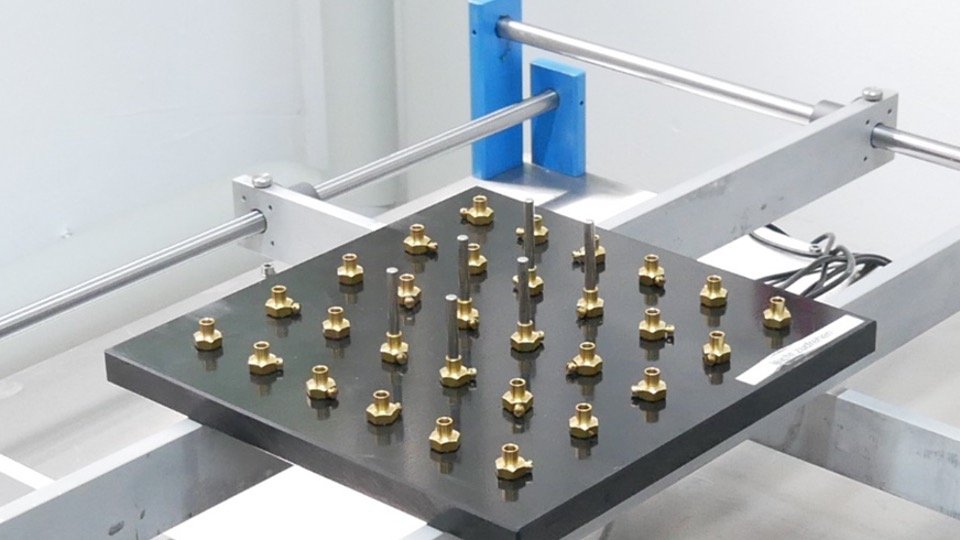

Qualification - the necessary certainty for longevity and stability in your application
Every temperature sensor type is qualified before series release for series production. This includes the verification of all specified requirements as well as the execution of certain standard stress tests, such as
- temperature shock tests
- Determination of the response time
- Determination of the pull-out force (destructive test)
IPQC (In Process Quality Control) tests are carried out in the manufacturing process to ensure that each sensor is perfect, perfect in the sense that it corresponds exactly to the qualified type.
Qualification of our temperature sensors is comprehensive and practice-oriented

Thermal stress load
Up to 250,000 temperature changes to prove the mechanical and electrical long-term stability

Permeation
Exposure to moisture at high temperatures to prove long-term stability in a humid environment
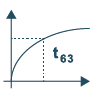
Response time
Verification of compliance with the response time specified by the customer (t90, t63, tx) depending on the immersion depth

Acceleration stress
Application of high acceleration forces to verify the vibration resistance in x/y/z direction

Pull-out force
Determination of the pull-out force of a probe type and verification of compliance with the specified pull-out force

Salt fog
Verification of corrosion resistance in various and sometimes highly aggressive ambient conditions
We qualify every application-specific type of temperature probe that is developed

- We produce prototypes quickly and flexibly in line with the design series production status, which are fit for series of qualification measurements and can be used for field tests.
- Together, we work out which qualification measures are suitable and sufficient in order to provide verification of fulfilment of your requirements for your temperature probe type.
- Our laboratory in Lenzkirch is equipped with temperature baths, temperature cycling test benches and climatic test cabinets. In addition, we have accredited partners who can carry out further series of qualification tests and measurements.
- Our qualification is always comprehensive and practice-oriented, so the expected service life and long-term stability of the temperature probe type is designed for 15 years.

Temperature change load test
A sufficiently large sample of temperature probes of a certain type is alternately and suddenly immersed in basins filled with cold and hot water or oil.
In this way, the temperature probes are defined and subjected to extreme stress, since the materials used in the probe have different temperature coefficients. The forces generated in the probe must not impose on the temperature probe. The long-term stability is always within the specification.
Before, during and after completion of this stress test, each individual probe in the sample must work faultlessly and within the specification.
At our in-house test laboratory in Lenzkirch, each new type of temperature probe is subjected to these temperature shocks 10,000 times. The Coffin-Manson method is used to determine the minimum service life that can be expected of this probe type in a specific application.
During the stress tests, the relevant data for each probe is measured permanently in real time and recorded, so that any abnormal behaviour, such as a dropout or a resistance jump, would be detected.
The entire sample, i.e. each individual probe in the sample, must pass this load test without any errors or drift, otherwise there will be no release for series production.

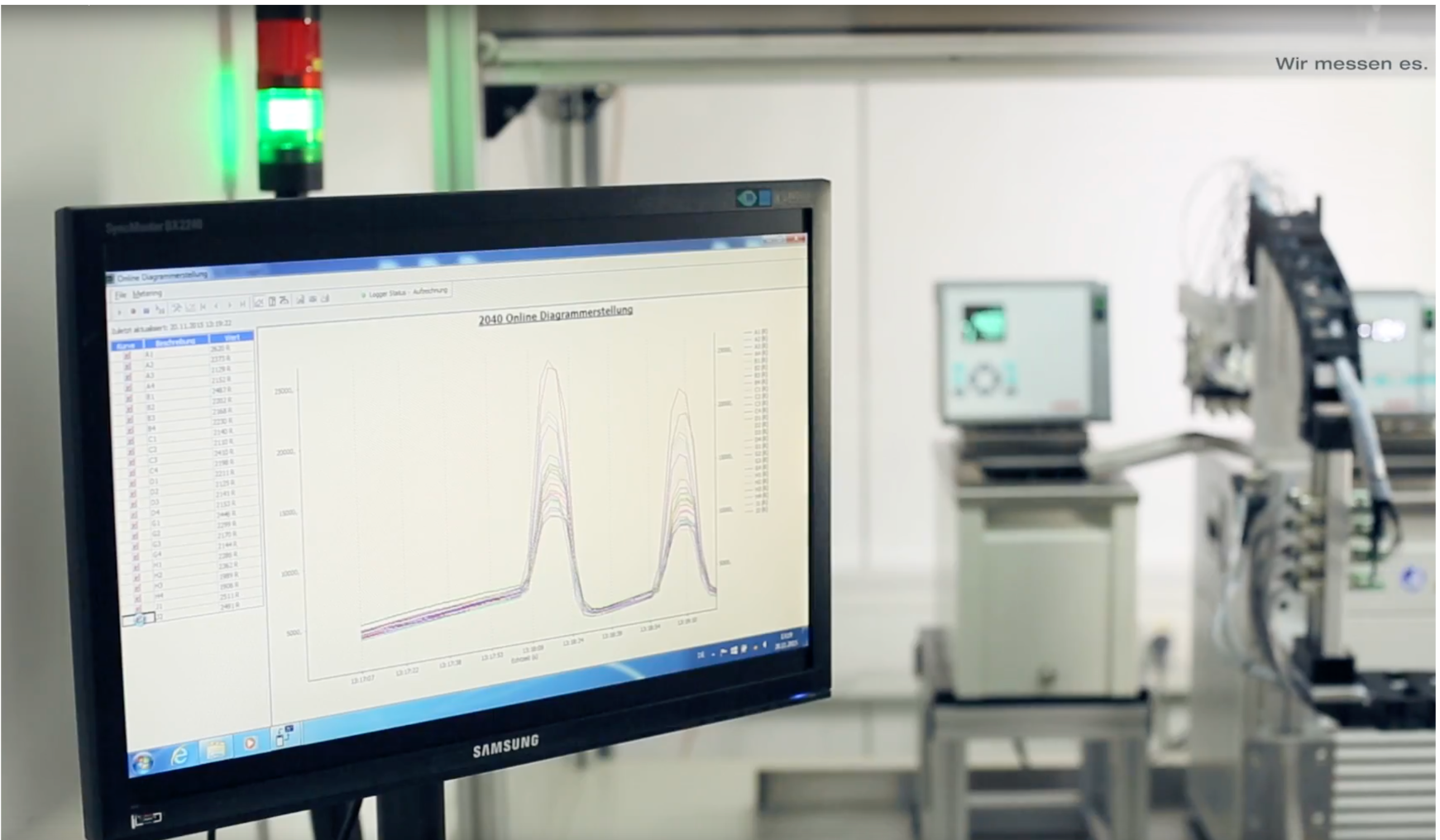

Permeation resistance – verification in a humid environment at high temperature
A meaningful sample of temperature probes of a certain type is stored in a climatic test cabinet at high temperature and high relative humidity.
In this way, the long-term stability of the temperature probes is tested at high ambient humidity. All probes would gradually show drift effects and eventually fail with a short circuit if they were not perfectly designed and manufactured in the first place.
Before, during and after completion of this load test, each individual probe in the sample must work faultlessly and within the specification.
During this stress test, the relevant data for each probe is measured permanently in real time and recorded, so that any abnormal behaviour, such as a dropout or a resistance jump, would be detected.
The entire sample, i.e. each individual probe in the sample, must pass this stress test without any errors, otherwise there will be no release for series production.


Vibration resistance – verification at high acceleration forces
A sufficiently large sample of temperature probes of a certain type is subjected to acceleration forces of up to 20g in the x, y and z-axes on a suitable vibration table in accordance with the standards (with regard to the amplitudes and the frequencies to be passed through).
This hard vibration generates extreme forces, which act mechanically on the firmly clamped temperature probes. These high mechanical loads result in failure of the probes if they have not been perfectly designed and manufactured in the first place.
Before, during and after completion of this stress test, each individual probe in the sample must work faultlessly and within the specification.
Once the stress test is over, all relevant parameters of each probe are measured and documented in the test laboratory; all readings must be within the specification.
The entire sample, i.e. each individual probe in the sample, must pass this stress test without any errors, otherwise there will be no release for series production.
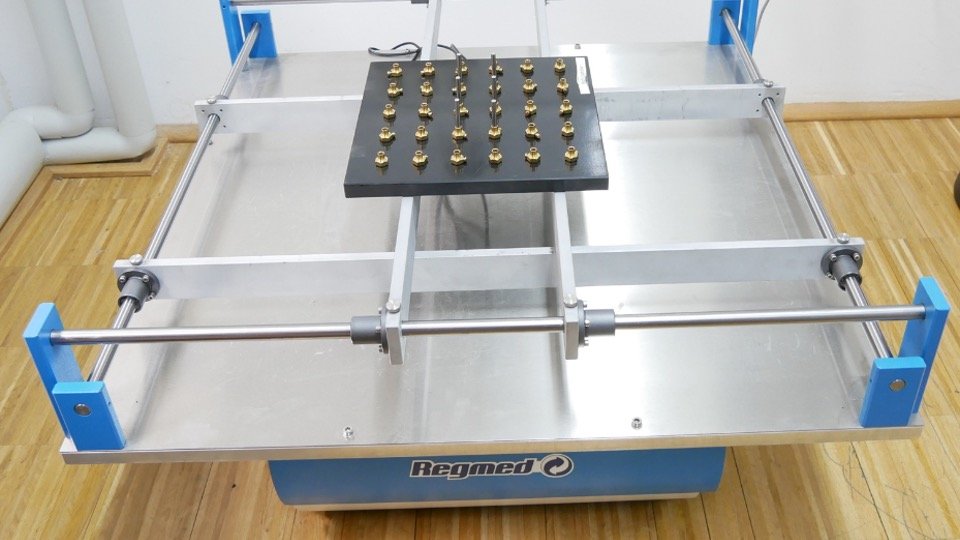


Salt spray test - to verify the corrosion resistance
A sufficiently large sample of temperature probes of a certain type is exposed to a highly aggressive salt spray – an exceptionally corrosive ambient condition.
Pitting corrosion would result in the failure of all probes over the long term if the materials used had not been selected perfectly in advance and if the probes had not been perfectly designed and manufactured (tightness).
Before, during and after completion of this stress test, each individual probe in the sample must work faultlessly and within the specification.
Once the stress test is over, all relevant parameters of each probe are measured and documented in the test laboratory; all readings must be within the specification.
The entire sample, i.e. each individual probe in the sample, must pass this stress test without error, in particular without any signs of pitting, otherwise there will be no release for series production.

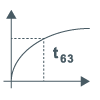
Response times – the design of the temperature probe is a decisive factor
Each temperature probe of a certain type is individually clamped on a high-precision test bench and the response times t ( T63, T90 and Tx) are measured and documented at high resolution as a function of the immersion depth.
The response time must be verifiably within the given specification. The response time to be achieved according to the specification can only be ensured by a suitable probe design and use of the right components.
Each individual probe manufactured subsequently during series production must demonstrably meet the response time specified or determined during type testing.
To this end, a corresponding final test must be carried out in production on 100% of the manufactured probes.
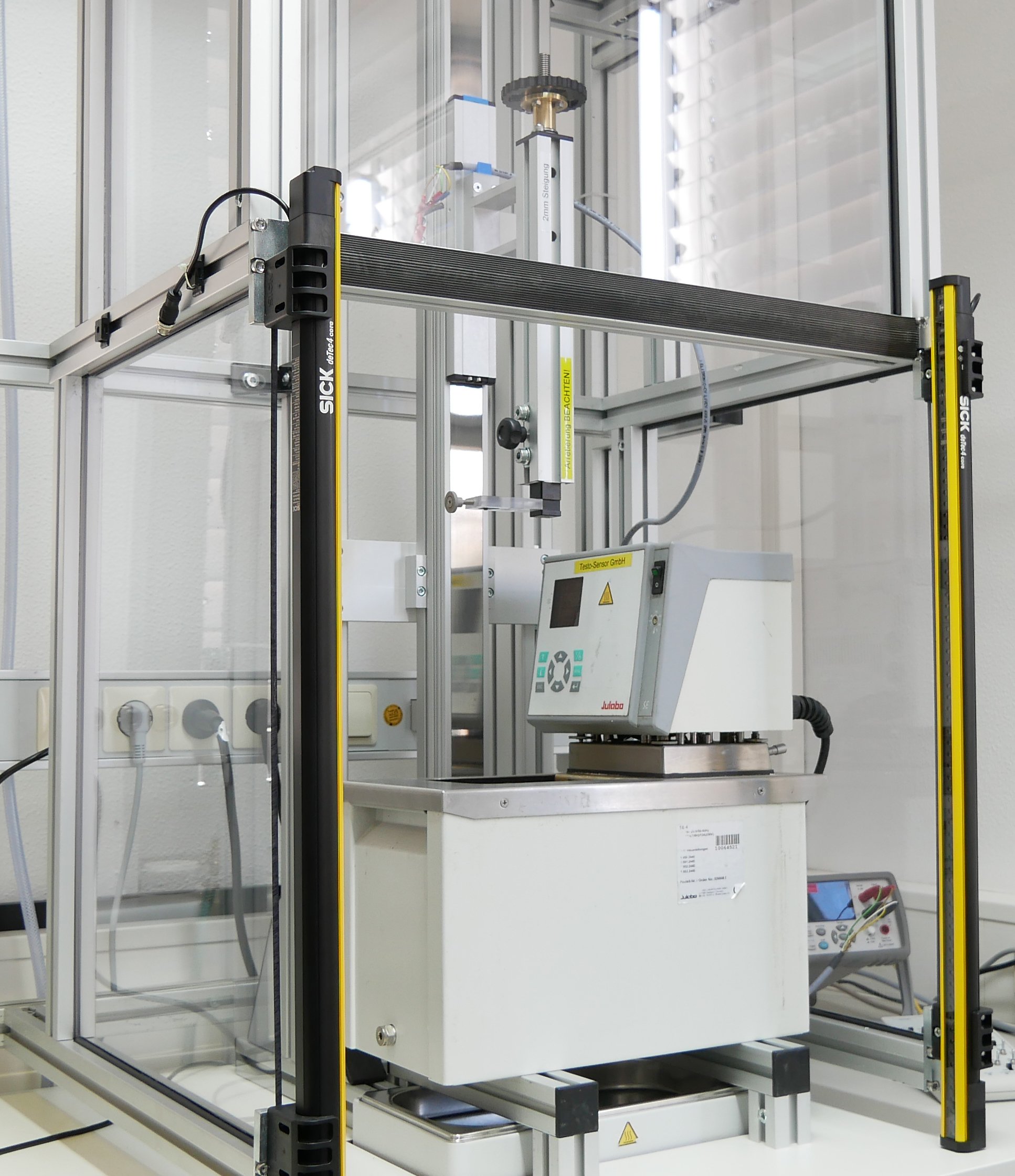

Cable pull-out force – verification of practical robustness
Each temperature probe type is intensively qualified before being released for series production.
This includes ensuring that the temperature probe is mechanically robust and that its cable cannot be pulled out unintentionally – even when the temperature changes or in a humid environment.
Depending on the probe type, the cable is crimped, rolled or potted in order to maintain the necessary pull-out force.
The pull-out force (destructive test) for each new type of temperature probe is determined on a suitable test bench using a sufficiently large sample and compliance with the specification is verified.
Subsequently during series production, each individual temperature probe manufactured must fulfil the pull-out force specified and determined in the type test. To be on the safe side, random samples are taken regularly during production and the pull-out force is measured and checked in the laboratory (destructive test).
Get in contact with us.
Do you have any questions, comments, or suggestions?
Would you like to discuss your questions about a temperature probe project?
Contact us, we will be happy to assist you.
- Testo Sensor GmbH
- Testo-Str. 1 | 79853 Lenzkirch
- +49 7653 96597 0
- +49 7653 96597 99
- info@testo-sensor.de
- Neu: Testo Sensor Webshop
Your contact persons in sales

- Temperature probe for heat and cold meters
- Patrick Hermann
- +49 7653 96597 73
- phermann@testo-sensor.de

- Heating technology
- Nico Frey
- +49 7653 96597 74
- nfrey@testo-sensor.de

- Air conditioning and refrigeration
- Jannik Wolf
- +49 7653 96597 75
- jwolf@testo-sensor.de

- Temperature probes for HORECA applications
- Tobias Preiser
- +49 7653 96597 76
- tpreiser@testo-sensor.de

- Regional Sales Southern Europe
- Luca Malossi
- +49 7653 96597 77
- lmalossi@testo-sensor.de

- Plastics industry and mechanical engineering
- Tobias Löffler
- +49 7653 96597 49
- toloeffler@testo-sensor.de